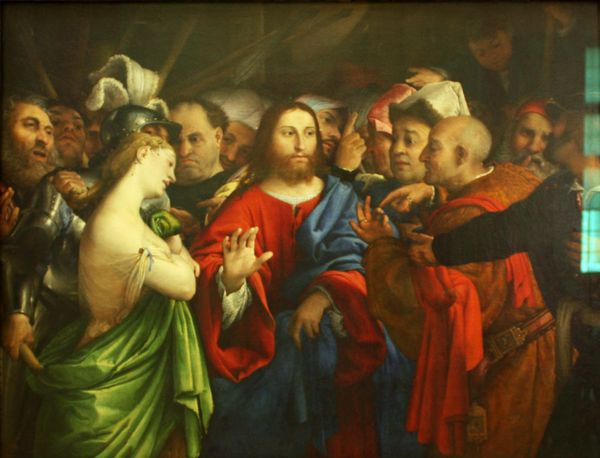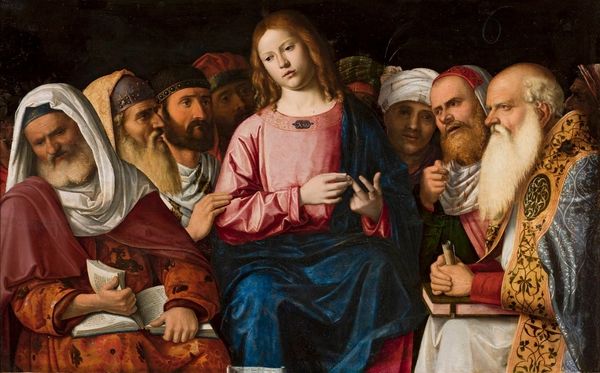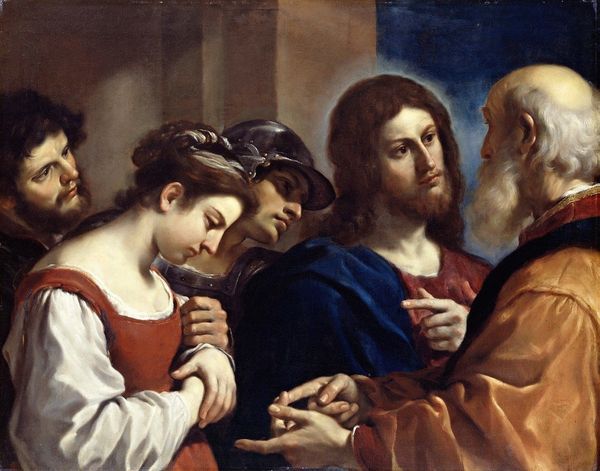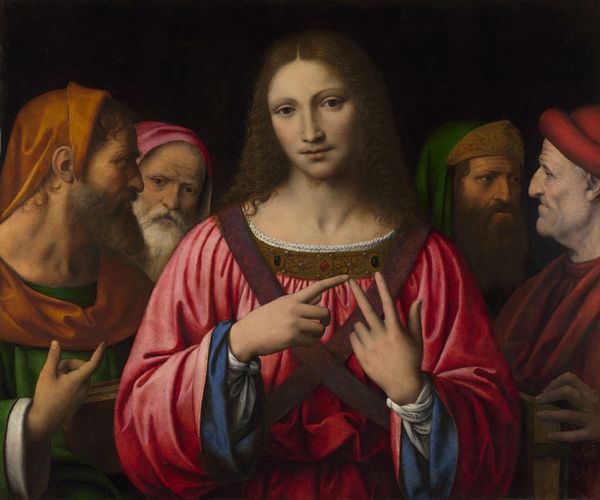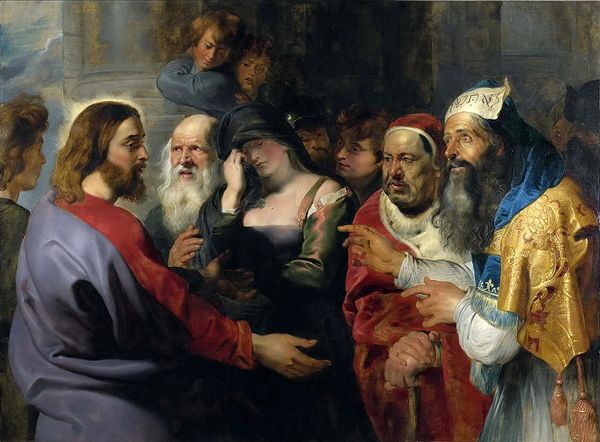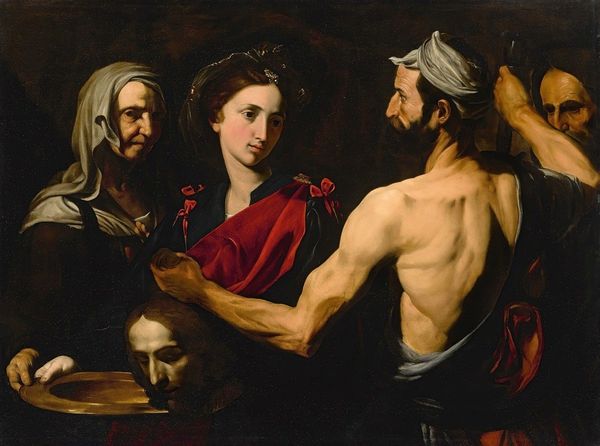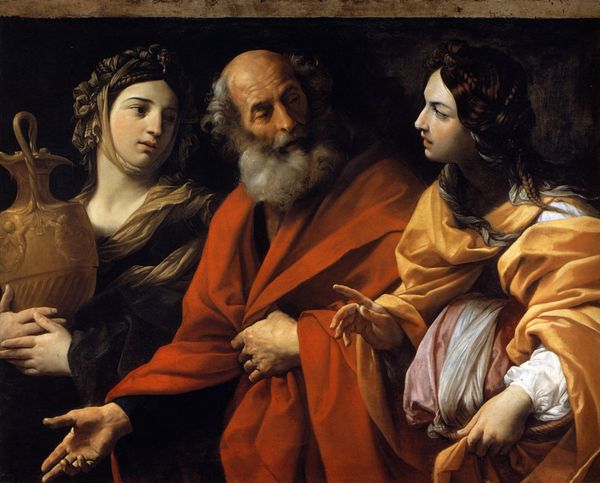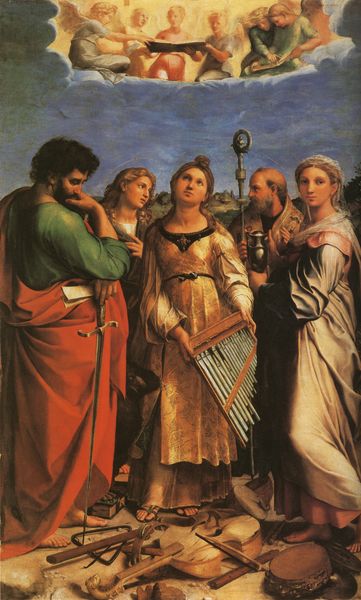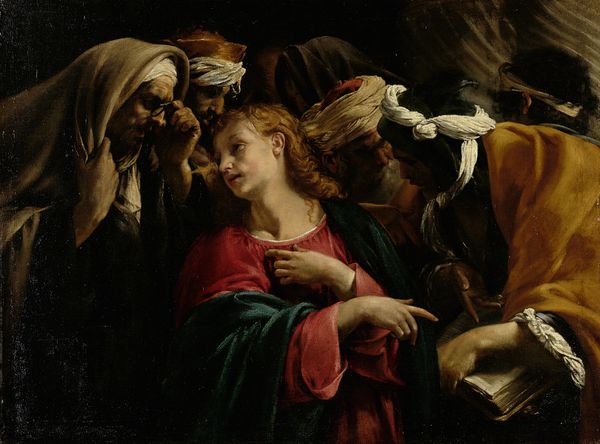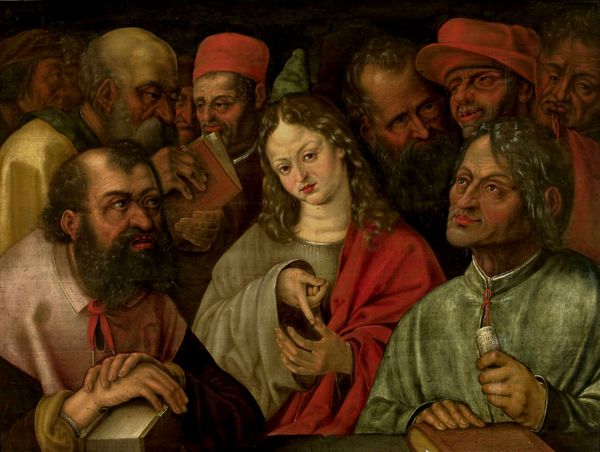
oil-paint
#
portrait
#
venetian-painting
#
oil-paint
#
figuration
#
oil painting
#
history-painting
#
italian-renaissance
Dimensions: 78.5 x 75 cm
Copyright: Public domain
Curator: We're looking at Palma Vecchio's "Christ and the Adulteress" from 1528, currently housed in the Capitoline Museums in Rome. The oil painting depicts a biblical scene of forgiveness. Editor: My immediate impression is of its surprising stillness. Despite the drama inherent in the subject, the figures possess a serene monumentality, heightened by the use of dark colors that almost hide some of the surrounding characters. Curator: Yes, there’s a certain weight to the composition. Consider the use of light and shadow: the tenebrism concentrates our gaze upon the central figures – Christ and the woman – while other figures fade almost entirely into the background, their faces nothing more than blurs. Observe how the painting uses the contrast between light and dark to suggest levels of understanding: ignorance against understanding. Editor: And observe how their garments also guide us to interpret those roles. The accusers are wearing warmer colours, yellows and greens; whereas, the woman and Christ both don cooler, more contemplative colors of umber and rose. This is all symbolic, yes? Christ represents cool composure under fire; whereas the woman expresses somber pensiveness as she faces what could be an awful fate. Curator: Symbolism is indeed crucial here, isn’t it? The artist paints Christ and the woman using bright, almost radiant colours that suggest they are divine and worthy of compassion, in opposition to those of the warm coloured crowd seeking punitive action. Beyond the pure historical illustration, consider it a symbolic work on judgement, guilt and especially, the sublime possibility of mercy. Editor: Right. Palma Vecchio truly understands how symbols speak across time, imbuing the biblical narrative with universal resonance. In this respect, the image of Christ refusing to punish a sinful person becomes a symbol of acceptance. This makes us think not just about then, but about ourselves in relation to guilt and empathy now. Curator: I agree completely. The piece invites continuous investigation into the visual cues that both highlight historical significance and provide timeless, accessible interpretation. Editor: A powerful blend indeed; offering formal and symbolic elements that provide a rich sensory experience.
Comments
No comments
Be the first to comment and join the conversation on the ultimate creative platform.
